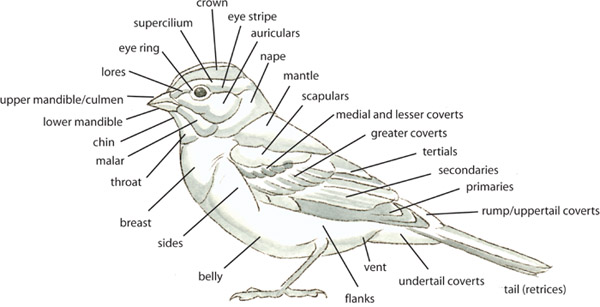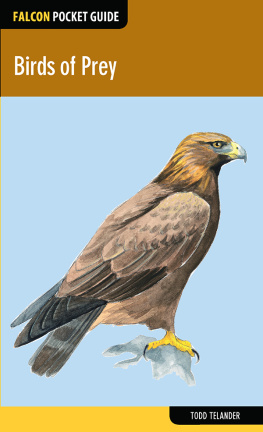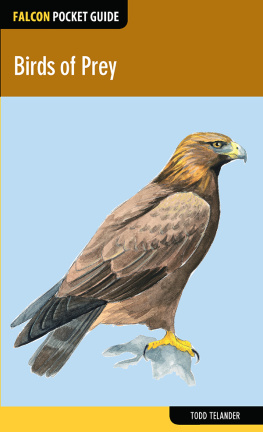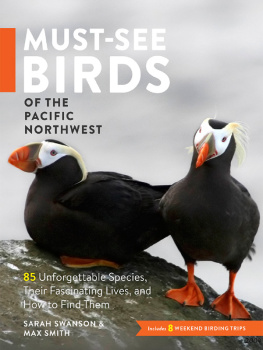Todd Telander - Birds of the Pacific Northwest
Here you can read online Todd Telander - Birds of the Pacific Northwest full text of the book (entire story) in english for free. Download pdf and epub, get meaning, cover and reviews about this ebook. year: 2020, publisher: Falcon Guides, genre: Home and family. Description of the work, (preface) as well as reviews are available. Best literature library LitArk.com created for fans of good reading and offers a wide selection of genres:
Romance novel
Science fiction
Adventure
Detective
Science
History
Home and family
Prose
Art
Politics
Computer
Non-fiction
Religion
Business
Children
Humor
Choose a favorite category and find really read worthwhile books. Enjoy immersion in the world of imagination, feel the emotions of the characters or learn something new for yourself, make an fascinating discovery.

- Book:Birds of the Pacific Northwest
- Author:
- Publisher:Falcon Guides
- Genre:
- Year:2020
- Rating:3 / 5
- Favourites:Add to favourites
- Your mark:
- 60
- 1
- 2
- 3
- 4
- 5
Birds of the Pacific Northwest: summary, description and annotation
We offer to read an annotation, description, summary or preface (depends on what the author of the book "Birds of the Pacific Northwest" wrote himself). If you haven't found the necessary information about the book — write in the comments, we will try to find it.
Birds of the Pacific Northwest — read online for free the complete book (whole text) full work
Below is the text of the book, divided by pages. System saving the place of the last page read, allows you to conveniently read the book "Birds of the Pacific Northwest" online for free, without having to search again every time where you left off. Put a bookmark, and you can go to the page where you finished reading at any time.
Font size:
Interval:
Bookmark:

Todd Telander is a naturalist/illustrator/artist living in Walla Walla, Washington. He has studied and illustrated wildlife since 1989, while living in California, Colorado, New Mexico, and Washington. He graduated from the University of California, Santa Cruz, with degrees in biology, environmental studies, and scientific illustration and has since illustrated numerous books and other publications, including FalconGuides Scats and Tracks series. His wife, Kirsten Telander, is a writer, and they have two sons, Miles and Oliver. His work can be viewed online at toddtelander.com.

To my wife, Kirsten; my children, Miles and Oliver; and my parents, all of whom have supported and encouraged me through the years. Special thanks to Mike Denny for his expert critique of the illustrations.
FALCON GUIDES
An imprint of The Rowman & Littlefield Publishing Group, Inc.
Falcon, FalconGuides, and Outfit Your Mind are registered trademarks of The Rowman & Littlefield Publishing Group, Inc.
Distributed by NATIONAL BOOK NETWORK
Copyright 2020 The Rowman & Littlefield Publishing Group, Inc.
A previous edition of this book was published by Falcon Publishing, Inc. in 2013.
All interior illustrations by Todd Telander unless otherwise noted.
All rights reserved. No part of this book may be reproduced in any form or by any electronic or mechanical means, including information storage and retrieval systems, without written permission from the publisher, except by a reviewer who may quote passages in a review.
British Library Cataloguing-in-Publication Information Available
Library of Congress Control number: 2020932355
ISBN 978-1-4930-5192-2 (paper : alk. paper)
ISBN 978-1-4930-5193-9 (electronic)
 The paper used in this publication meets the minimum requirements of American National Standard for Information SciencesPermanence of Paper for Printed Library Materials, ANSI/NISO Z39.48-1992.
The paper used in this publication meets the minimum requirements of American National Standard for Information SciencesPermanence of Paper for Printed Library Materials, ANSI/NISO Z39.48-1992.
The Pacific Northwest is a loosely defined region, generally considered to include all of Oregon and Washington, the sections of Idaho and Montana west of the Rocky Mountains, and the southern section of British Columbia. On its western side, this vast area is dominated by the influence of the eastern Pacific Ocean, and includes rocky shores, coastal dunes, rain forests, and lowland estuaries. Eastward rises the mighty Cascade Range with its towering volcanic peaks, and beyond prevails a rain shadow over the eastern half of the region, drying out the land and providing four distinct seasons. There we find great grass- and shrublands, deserts of sage, and endless cropland, until the terrain once again rises toward the Rocky Mountains. This geographic diversity, with its accompanying array of climate zones and vegetation, provides for an incredible number and variety of bird species (over 400 species have been recorded). The Pacific Northwest supports habitat for resident breeders and seasonal visitors, as well as those birds passing through from other breeding and wintering grounds. From Shearwaters on the open ocean, Tufted Puffins on the rugged coast, White-tailed Ptarmigans high in the arctic zone of Mount Rainier, to Chukars in the arid, rocky basins, this guide describes 300 of the most common birds you are likely to encounter here and should give you a good start to your birding exploration and enjoyment.
The order of species listed in this guide is based on the most recent version of the Checklist of North American Birds, published by the American Ornithologists Union. The arrangement of some groups, especially within the nonpasserines, may be slightly different than that of older field guides but reflects the most recent accepted arrangement.
Both the common name and the scientific name are included for each entry. Of the two, the universally accepted scientific name of genus and species is the more reliable identifier because common names can vary by region and sometimes there may be more than one. Also, if you know a little Latin, you can often learn interesting facts about a bird from its Latin name. For instance, the Clarks Nutcrackers generic name nucifraga , derives from the Latin nucis , meaning nut, and fraga , meaning to break.
Birds are grouped into families based on similar traits, behaviors, and genetics. When trying to identify an unfamiliar bird, it can often be helpful to first place it into a family, which will reduce your search to a smaller group. With birds you are already familiar with, try to understand what makes them fit into their particular family. Characteristics like bill size and shape, feeding behavior, and habitat preference can be remarkably consistent within a family. Then when you encounter an unfamiliar bird, you can make a pretty good guess as to what group it belongs to (or doesnt!).
The size given for each bird is the average length from the tip of the bill to the end of the tail if the bird was laid out flat. Sometimes females and males vary in size, and this variation is described in the text. Size can be misleading if you are looking at a small bird that happens to have a very long tail or bill. It can be more effective to judge the birds relative size by comparing the size difference between two or more species.
The season given in the accounts is the time when the greatest number of individuals occur in the Pacific Northwest. Some species are year-round residents, some may spend only summers or winters here, and some may be transient, only stopping during the spring or fall migration. Even if only part of the year is indicated for a species, be aware that there may be individuals that arrive earlier or remain for longer than the given time frame. Plumage also changes with the season for many birds, and this is indicated in the text and illustrations.
A birds habitat is one of the first clues to its identification. Note the environment (including vegetation, climate, elevation, substrate, presence or absence of water) where you see a bird and compare it with the description listed. This can be especially helpful when identifying a bird that shares traits with related species. For example, Western Gulls and California Gulls are similar, but California Gulls may be found far inland while Western Gulls are strictly coastal.
The illustrations show the adult bird in the plumage most likely to be encountered during the season(s) it is in the Pacific Northwest. If it is likely that you will find more than one type of plumage during this time, the alternate plumage is also shown. For birds that are sexually dimorphic (females and males look different), illustrations of both sexes are usually included. Other plumages, such as those of juveniles and alternate morphs, are described in the text.
Bird topography describes the outer surface of a bird and how various anatomical structures fit together. Below is a diagram outlining the terms most commonly used to describe the feathers and bare parts of a bird.

Font size:
Interval:
Bookmark:
Similar books «Birds of the Pacific Northwest»
Look at similar books to Birds of the Pacific Northwest. We have selected literature similar in name and meaning in the hope of providing readers with more options to find new, interesting, not yet read works.
Discussion, reviews of the book Birds of the Pacific Northwest and just readers' own opinions. Leave your comments, write what you think about the work, its meaning or the main characters. Specify what exactly you liked and what you didn't like, and why you think so.



